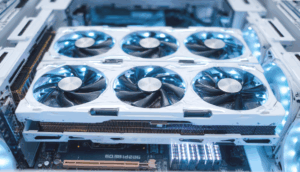In the ever-evolving landscape of industrial automation, the demand for high-bandwidth communication continues to surge. As manufacturing processes become increasingly complex and data-intensive, the need for robust and reliable communication protocols is paramount. CC-Link IE (Industrial Ethernet) emerges as a powerful solution, specifically engineered to address the demanding requirements of modern industrial applications. This technology not only facilitates seamless data exchange but also unlocks new possibilities for real-time control and diagnostics, significantly boosting overall operational efficiency and productivity. Understanding the nuances of CC-Link IE and its capabilities is crucial for engineers and system integrators aiming to optimize their industrial networks.
CC-Link IE stands out from other industrial Ethernet protocols due to its deterministic nature and its ability to handle large volumes of data with minimal latency. This is achieved through a combination of advanced technologies, including token passing and time-sensitive networking (TSN). Token passing ensures that each device on the network has a guaranteed time slot for transmitting data, eliminating the possibility of collisions and ensuring predictable communication. TSN further enhances real-time performance by synchronizing the clocks of all devices on the network, enabling precise control over data transmission timing. These features are particularly critical in applications where precise synchronization and real-time response are essential, such as robotics, motion control, and high-speed packaging.

The benefits of implementing CC-Link IE extend beyond improved network performance. Its robust design and high level of noise immunity make it well-suited for harsh industrial environments, where electromagnetic interference and other disturbances can disrupt communication. Furthermore, CC-Link IE supports a wide range of topologies, including star, ring, and line configurations, providing flexibility in network design and deployment. This adaptability allows engineers to tailor the network to the specific needs of their application, optimizing performance and minimizing costs. The integration of CC-Link IE with existing automation systems is also relatively straightforward, thanks to the availability of a wide range of compatible devices and software tools.
Consider, for instance, a high-speed packaging line where multiple robots, sensors, and actuators must work in perfect synchronization. Traditional Ethernet protocols may struggle to provide the required level of determinism and real-time performance, leading to delays and errors in the packaging process. By implementing CC-Link IE, the packaging line can achieve significantly faster speeds and higher levels of accuracy. The deterministic nature of CC-Link IE ensures that each robot and actuator receives the necessary commands at precisely the right time, resulting in smooth and efficient operation. Similarly, in a robotic assembly line, CC-Link IE can enable seamless communication between robots and other devices, allowing for complex assembly tasks to be performed with greater precision and speed. The high bandwidth of CC-Link IE also supports the transmission of large amounts of sensor data, enabling real-time monitoring and diagnostics, further improving overall system reliability and performance.
In conclusion, CC-Link IE offers a compelling solution for industrial applications that demand high bandwidth, low latency, and deterministic communication. Its advanced features, robust design, and flexible topology make it an ideal choice for a wide range of applications, from robotics and motion control to high-speed packaging and process automation. By leveraging the power of CC-Link IE, manufacturers can unlock new levels of performance, efficiency, and reliability in their industrial networks, paving the way for greater innovation and competitiveness in the global marketplace. As industrial automation continues to evolve, CC-Link IE will undoubtedly play an increasingly important role in enabling the next generation of smart and connected factories.
